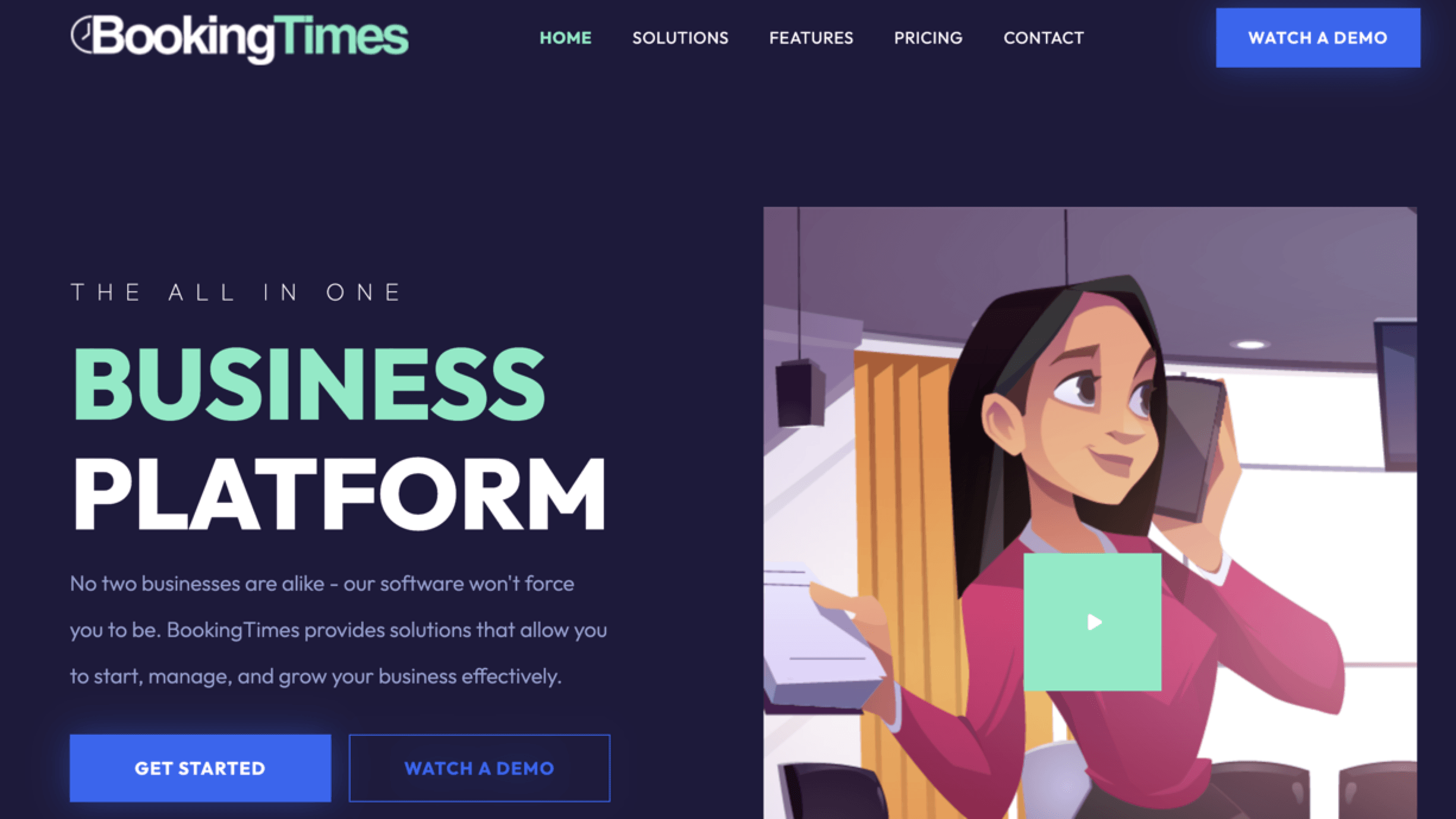Search engine optimization (SEO) is a familiar concept for many businesses in the tech industry. However, while you’re trying to get people interested in your software as a service (SaaS) or other products, you might be lacking in your own website’s development.
Learn how to use SEO for tech companies to use search to grow your business now.
What is SEO for tech companies?
SEO for tech companies is the process of improving your website to make it easier for your audience and search engines to find it. More specifically, tech SEO focuses on companies within the industry who want to stand out and earn more organic traffic.
What tech companies should use SEO?
Some prime examples of tech companies who need SEO include:
- SaaS companies
- Tech consulting businesses
- Technology manufacturers and distributors
- Web developers and web design services
- Information technology (IT) companies
Get SEO help from tech SEO pros 
Attract more clients with professional SEO services from WebFX — the team behind SEO.com that’ll bring 85,000+ hours of tech SEO experience to your campaign.
Why use SEO for SaaS and tech?
The tech industry is home to many different companies offering similar, useful products. So, how can you show your customers that you differ from the rest?
SEO can help. By optimizing your website, you can enjoy the following benefits:
- You earn more conversions: When people find your site at the top of search engine results pages, they’re more likely to visit your website. From there, you can encourage them down the sales funnel and boost your conversions organically.
- You improve user experience (UX): Part of optimizing your site is making it better for users, not just search engine algorithms. With that, you can create a UX for SEO that leaves people with a positive impression of your company and services.
- You stay competitive: Many of your competitors are already using SEO, but that’s no cause for worry. You can build on what they’ve done already and show how you’re an industry source and trustworthy company.
Above all, SEO is here to help you put yourself above others while maximizing resources.
What is unique about tech company SEO?
The following considerations make tech company SEO unique:
- Saturation: There are plenty of tech companies in the market, from app developers to CRM solutions to project management software, which can make SEO for software companies competitive.
- Audience: In most cases, users shopping in the tech market are savvy. In some cases, they’re aware of SEO, which makes it imperative for businesses to develop SEO content that demonstrates the organization’s knowledge.
- Tracking: Technology companies have dozens of data points to track, whether it’s website analytics or app analytics, which makes building an effective martech stack for tracking SEO performance critical.
The above considerations are why it’s valuable (if you’re outsourcing your tech company’s SEO) to partner with an SEO agency that specializes in your industry. If you’re curious, yes, we specialize in SEO for technology firms — and have millions of hours of experience in it.
How to get started with SEO for tech companies
Learn how to get started with SEO for tech companies with these best practices:
1. Audit your SEO strategy
Where are your strategy’s strengths, weaknesses, and opportunities? Find out with an SEO audit — you can use professional SEO audit services or audit your SEO internally with a free tool like Screaming Frog.
2. Target the right audience
Before you begin changing your website and overhauling the design, you need to outline your target audience. For tech companies, this will likely be other businesses or users who need your software. The specifics will vary depending on your company.
Creating buyer personas is one way to help you aim your content at the right users. Buyer personas are representations of your end user and point of contact — the person who will be interacting with your content. To create a persona, include the following information:
- Age
- Job title
- Industry
- Location
- Budget
This step will give you a start at earning more leads through your content.
3. Explain benefits and features
Benefits and features might seem like the same thing, but they represent different aspects of your product. Explaining them both will give customers all the details they need while persuading them to purchase.
Features are hard descriptions of parts of your product. Benefits, however, are the ways that your product will help the user. For example, if you sell email marketing services or email marketing software your features might be things like:
- Automated email storage
- Scheduling abilities
- Templates and
Your benefits could include:
- Saving time on writing and sending emails
- Better access to customer interactions and responses
- Reduced funds on multiple email tools
In terms of SEO, explaining benefits and features helps you create well-rounded, useful content that helps users and search engines. Google can also use these explanations to pull your product for relevant queries, which boosts SEO.
Above all, Google wants to give users relevant results, so if more people view and convert from your pages, you will be more likely to rank.
4. Use effective CTAs
Effective CTAs should be easy, actionable items that tell users what they can do next:

After putting in all that work on your website, the last thing you want is for users to click away before converting. CTAs tell users the next step, so they don’t have to guess. By adding CTAs, you can make sure your SEO works from the top of the funnel to the bottom.
5. Target long-tail keywords
A long-tail keyword contains three or more words, and it often brings a user that knows what they want. In comparison, a short-tail keyword like “crm software” can bring anymore, from someone writing a research paper to someone shopping for a solution.
While long-tail keywords have less search volume, they often have a more qualified user base. That’s why it’s an effective strategy for technology company SEO to research and target these keywords.
6. Produce authoritative content
Remember technology’s market saturation? Separate your organization from the rest by producing authoritative content. While this content will still target keywords, it’ll bring your team’s experience to the forefront.
For example, if you’re sharing how to choose a CRM software, your team can use their first-hand experience to share what a shopper should consider beforehand and look for when browsing options.
If you’re looking to attract authoritative backlinks with your content, consider building interactive tools, like a cost calculator.
What effective SEO for software companies looks like
Now that you know some of the basics of SEO for software companies, check out some examples below:
Keyword usage
Keywords are a crucial part of SEO, as they essentially control the SERPs. Keywords are the phrases people enter into the SERPs when looking for products and services.
For example, the term “email marketing software” brings up the following organic results:

You should have a target keyword and a few related ones for each page that you write, whether it’s a product page, blog post, or other copy. As you can see, the results above have done an excellent job with SEO, because Google pulls them directly from the SERPs.
You should use your target keyword in the following areas:
- Page title
- Meta description
- The page URL
- Body text
- Headings
Web design
Web design also impacts SEO for tech companies. Images, links, and text all play a role in how people and search engines interact with your website. Plus, who wants to look at a crowded or boring website?
This example from BookingTimes — a medical scheduling software company — includes a clear navigation bar, balanced graphics and text, and appropriate links:

Your design should represent your company while also making it easier for users and search engines to access every page they need.
Content
Content is the backbone of SEO. It’s where you will integrate keywords, help users find information, and pitch your products and services. However, you should be sure to integrate your keywords and break up each piece so it’s easy to read.
This content from Salesforce has a neat layout with seamless integration in the header:

They also include alt text for their images and an estimated length. Their actual body content is easy to skim, with plenty of heading breakdowns and bullet points:

Improve SEO for tech companies on SEO.com
Now that you have a start on tech SEO, it’s time to start planning your approach. If you want help, you can access dozens of articles here on SEO.com to help you research and create an SEO plan.
Or, if you want more information, you can contact us online to get started!
Let’s Drive Results Together 

Meet
The top digital marketing company behind SEO.com.
Ready to get results? Connect with us, today!






